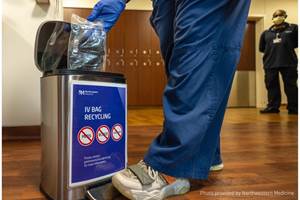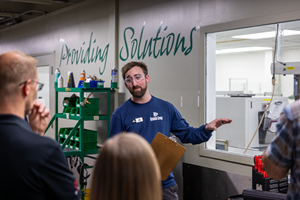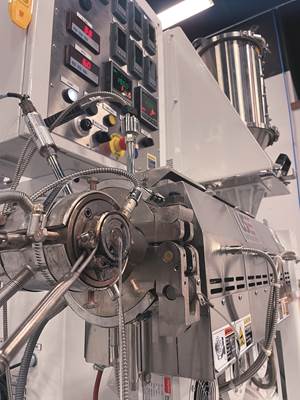More Complexity Adds Costs And Opportunities in Medical
Wood on Plastics
The rapidly rising cost of healthcare will generate demand for products that lower these costs to consumers. There are several ways that plastics can achieve these kinds of savings.
If I ever become famous enough to have a principle of economics named for me in the textbooks (i.e. Wood’s Rule), then I would like it to be this: No problem in economics ever becomes easier to solve by adding more people. This is because people are inherently complex and often unpredictable organisms, and adding more of them to the equation only increases the difficulty of finding a solution...along with raising the cost involved.
Nowhere will this rule prove more true than in the medical industry. As we all know by now, the market for medical products will be significantly affected for the foreseeable future by the Affordable Care Act (ACA or Obamacare). The rich political irony of the ACA is that its name includes the word “affordable,” but the real thrust of the law is to expand access to healthcare—not necessarily make it less expensive.
This is good news for manufacturers of plastics medical products: The rapidly rising cost of healthcare will generate demand for products that lower these costs to consumers. There are several ways that plastics can achieve these kinds of savings, and almost all of the savings will stem from the fact that these products add simplicity to the highly complex problem of keeping Americans healthy.
For instance, one significant method that insurers will utilize to lower healthcare costs is to reduce the amount of time patients spend in the hospital. This means that an increasing amount of inpatient healthcare will shift to home treatment. Many types of medical equipment and supplies will likely be sold directly to consumers through retail outlets in much the same way that prescription drugs are now. This will also spur demand for new, low-cost devices that monitor and communicate medical information between patients at home and doctors in the hospital.
Another way that future costs will be contained is by reusing or recycling medical supplies and equipment. A large percentage of the plastic supplies that are currently sold to healthcare providers are considered disposable. But resin prices are rising, and so are disposal costs. Many plastic products can be redesigned so they can be sterilized and used multiple times or integrated into the recycling stream.
The increased complexity and overall activity levels that stem from integrating all of these new patients/customers into the marketplace for medical products will keep a high premium on new technical innovations. New products will be invented, and improved ways of manufacturing existing products out of cheaper or more durable or lighter-weight materials will be developed.
Ultimately, the very best way to lower healthcare costs is to eliminate the need for them. Because let’s face it, the vast majority of what we have been talking about here are not really healthcare costs but rather “sick care” costs. Products that keep Americans healthy and productive throughout their lives will ultimately prove far less expensive than trying to fund and administer programs that pay for all of their medical care once they reach the age of 65. This is the corollary to Wood’s Rule: Economic problems are easier to solve if you subtract people. Less complexity, lower costs, and a healthier populace—those are the kind of products I want.
WHAT THIS MEANS TO YOU
•Hospitals are becoming increasingly “green,” and some plastics are perceived as less “green” than others (i.e. PVC). So be prepared for some de-selection of certain products.
•Certain aesthetic qualities of medical products (color, texture, etc.) will gain importance as more products are sold directly to consumers.
•The volume of healthcare products shipped to consumers is rising, and this will increasingly affect how they are packaged.
Related Content
Baxter to Scale Up PVC Intravenous Bag Recycling Program
Successful pilot program with Northwestern Medicine will expand to additional units and health systems.
Read MoreMedical Molder, Moldmaker Embraces Continuous Improvement
True to the adjective in its name, Dynamic Group has been characterized by constant change, activity and progress over its nearly five decades as a medical molder and moldmaker.
Read More3D Printed Spine Implants Made From PEEK Now in Production
Medical device manufacturer Curiteva is producing two families of spinal implants using a proprietary process for 3D printing porous polyether ether ketone (PEEK).
Read MoreCatheter Specialist Finds Sweet Spot Serving Small, Medium-Sized Concerns
Medical-component specialist LightningCath has carved a niche meeting the needs of small to medium-sized entrepreneurs with complex catheter designs … quickly.
Read MoreRead Next
See Recyclers Close the Loop on Trade Show Production Scrap at NPE2024
A collaboration between show organizer PLASTICS, recycler CPR and size reduction experts WEIMA and Conair recovered and recycled all production scrap at NPE2024.
Read MoreBeyond Prototypes: 8 Ways the Plastics Industry Is Using 3D Printing
Plastics processors are finding applications for 3D printing around the plant and across the supply chain. Here are 8 examples to look for at NPE2024.
Read More




















